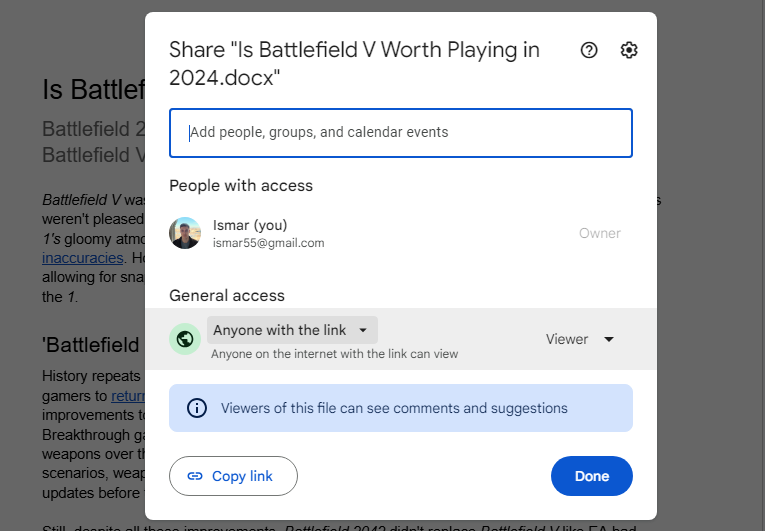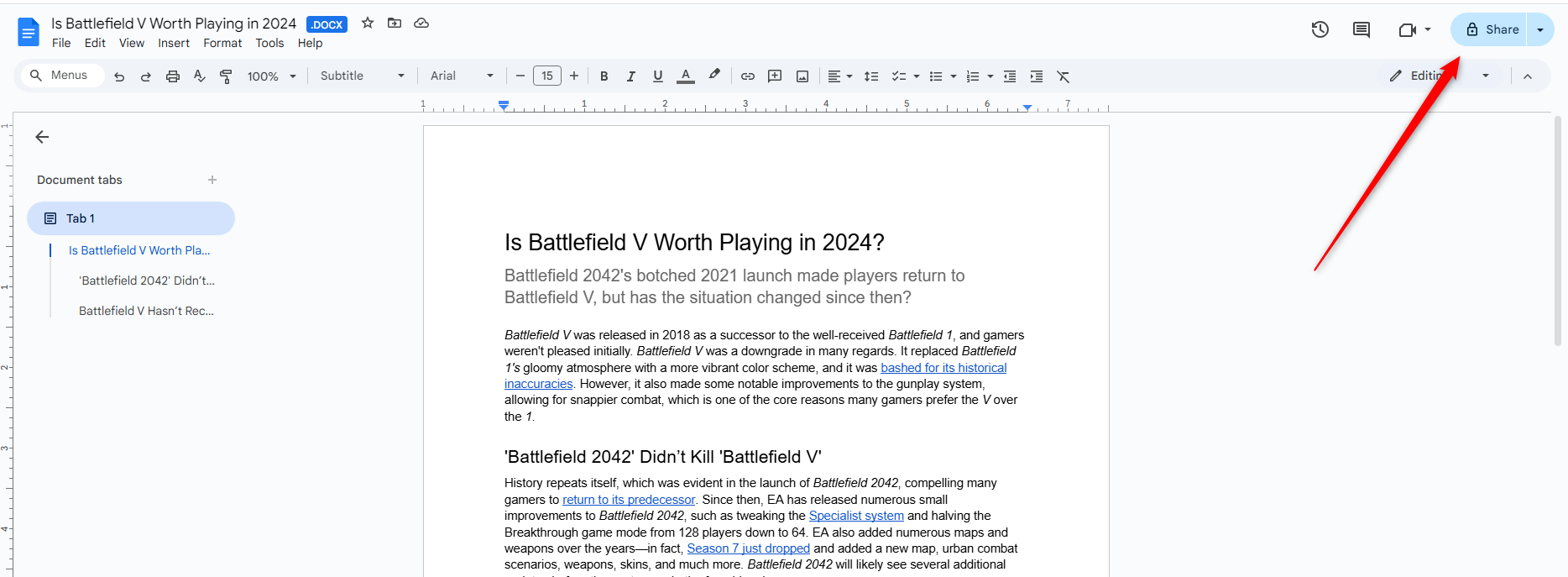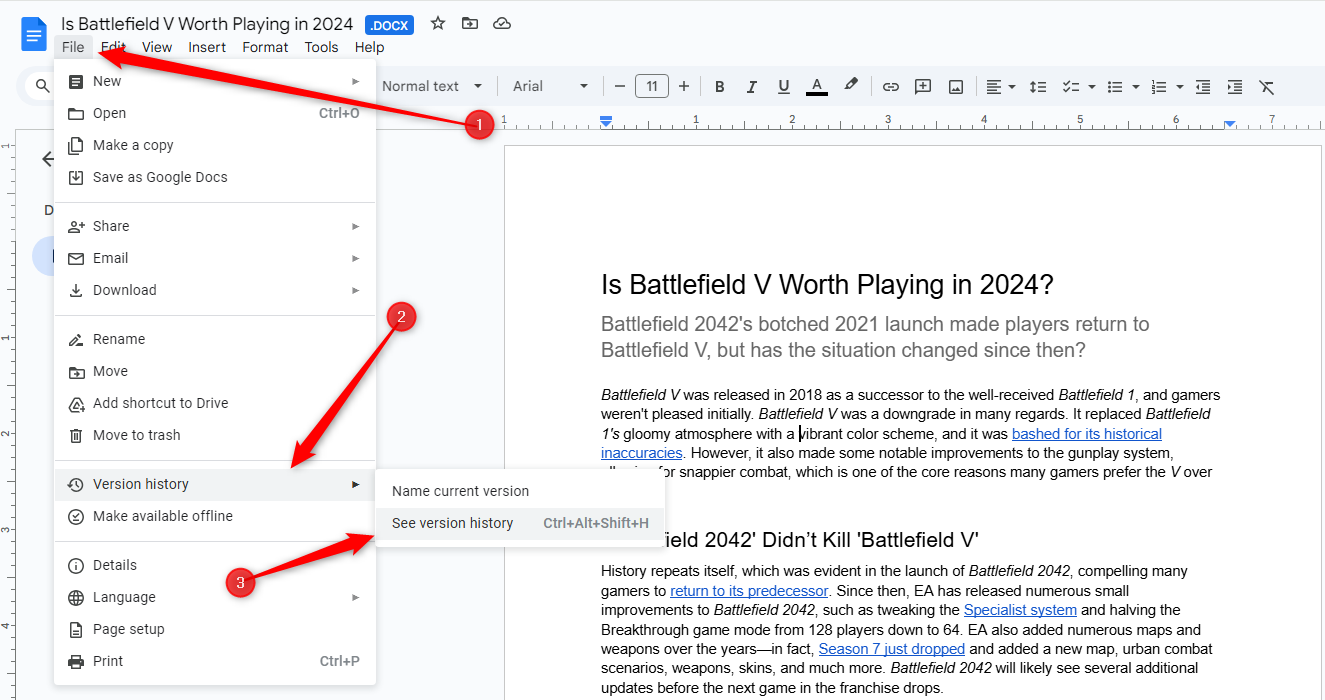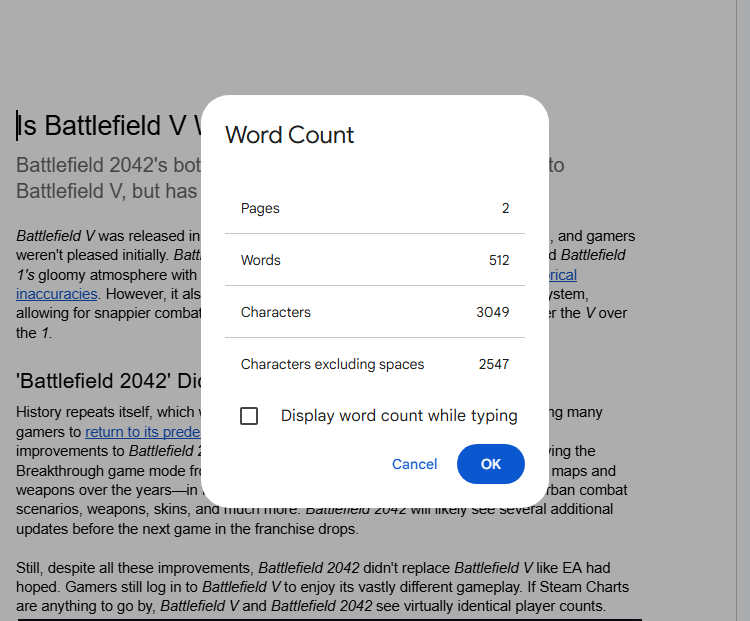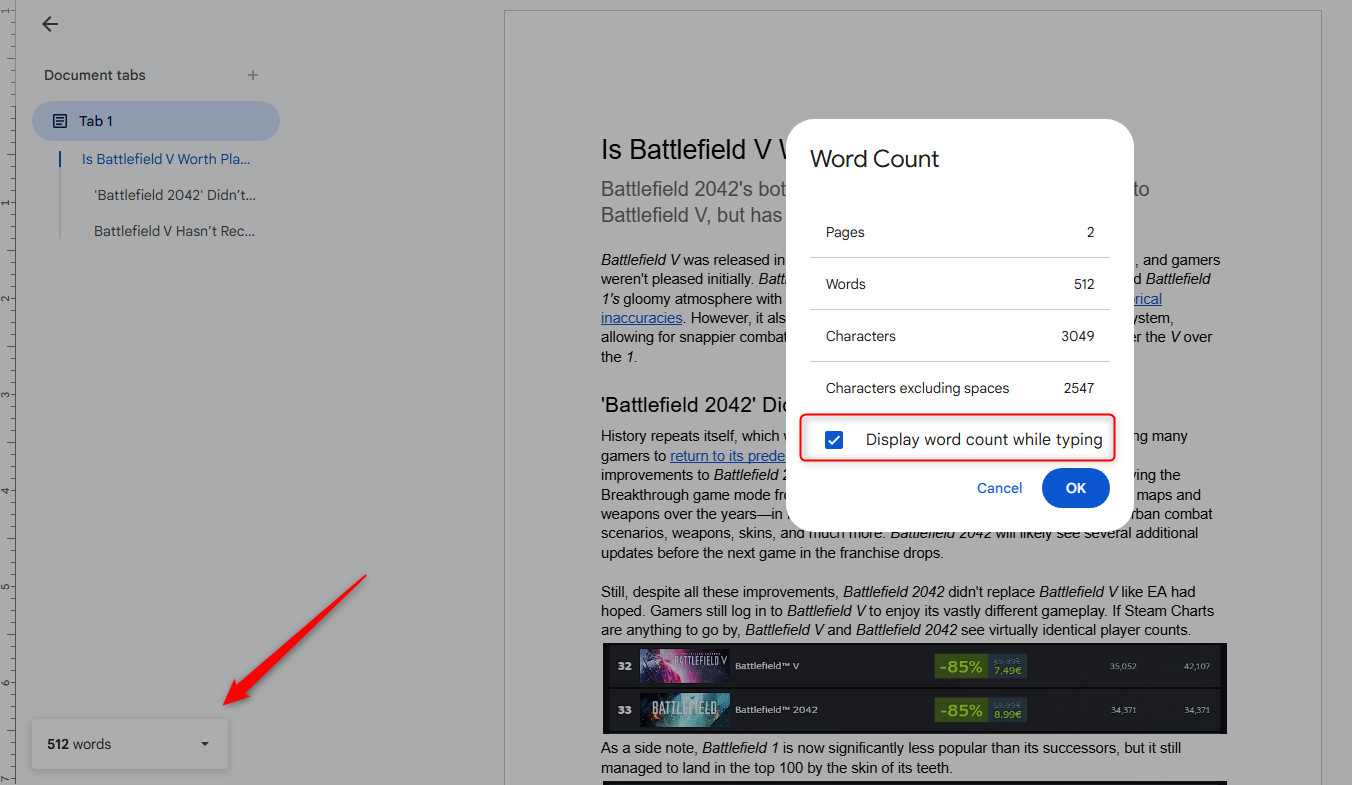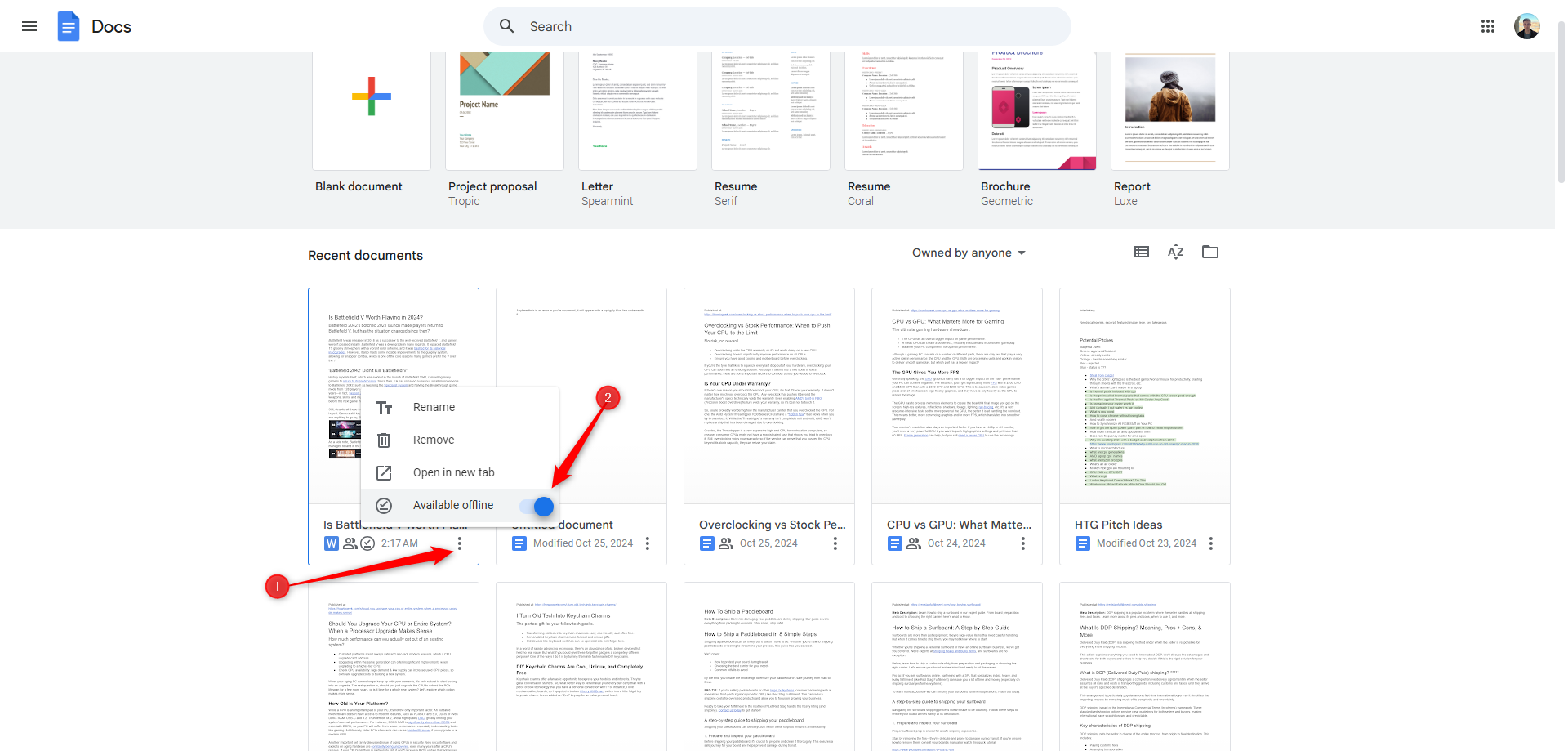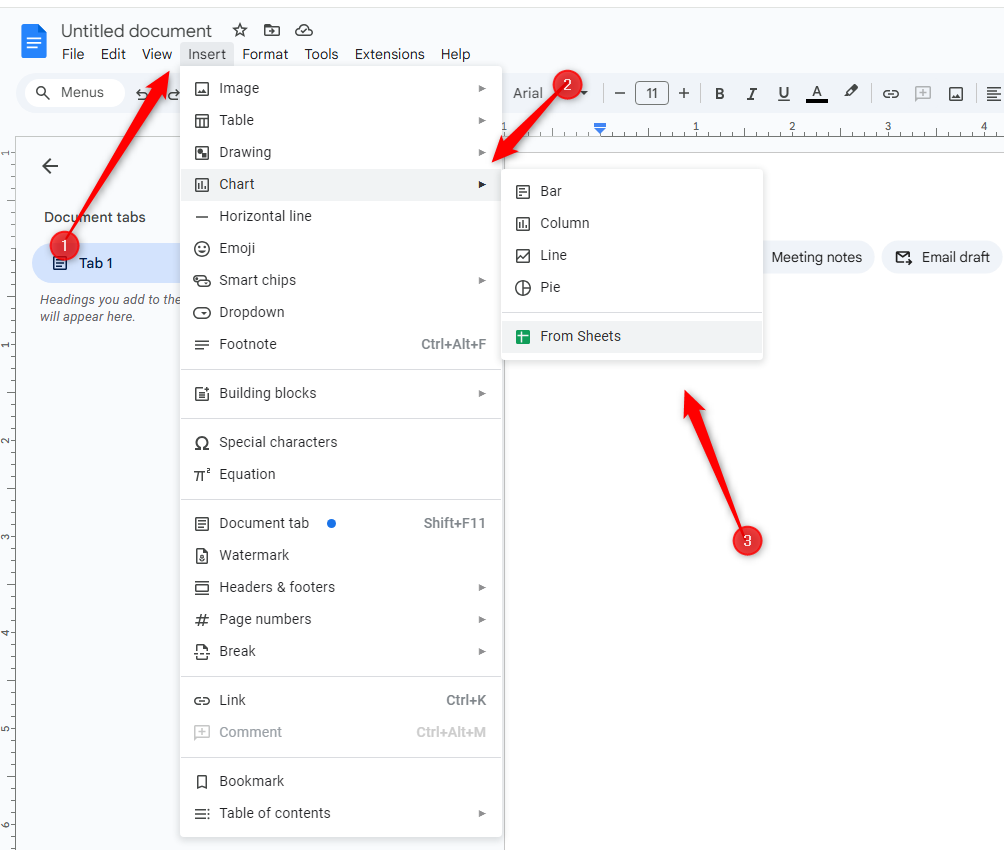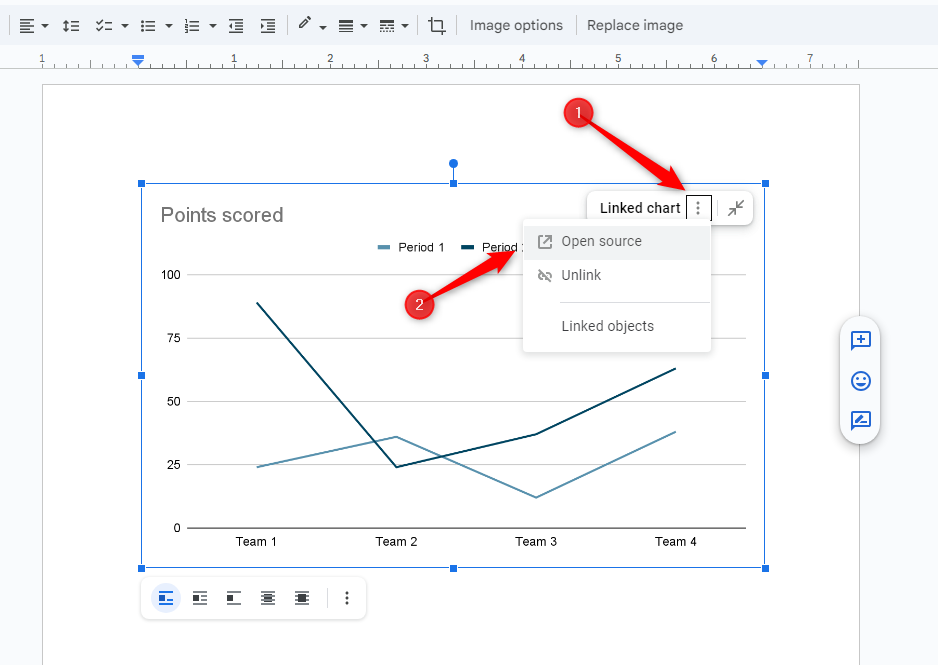If you’re just getting started with Google Docs, its extensive features and add-ons can be a little overwhelming. This guide will walk you through everything you need to know to get started with this powerful, cloud-based alternative to Microsoft Word.
What is Google Docs?
If you’ve heard of Google Docs before, feel free to skip ahead. If you’ve never heard of it before, here’s a crash course on what you need to know. We’ll go over the basics and get you brushed up with what Google Docs is and how you can get started right away.
Google Docs is a free, web-based word processor offered by Google as part of its complete office suite called “Google Workspace.” It’s a direct competitor to Microsoft Office. The other main services included in the cloud-based suite are Sheets (Excel) and Slides (Powerpoint).
Google Docs is available on all devices and platforms; all you need is an internet connection and a web browser (or, in the case of mobile, the applicable apps). Google does the rest and handles the brunt of the heavy lifting while it runs the software in the cloud.
Docs supports many different file types, including DOC, DOCX, TXT, RTF, and ODT, making it easy to view and convert Microsoft Office files directly from Google Drive. Since Docs is an online word processor, you can share and collaborate with multiple people on the same document, tracking revisions, changes, and suggestions—all in real time.
How To Sign Up for an Account
The first thing you’ll need to do before you can use Google Docs is sign up for a Google account (an @gmail account). If you already have an account, feel free to move on to the next section. If not, we’ll go over the simple way to create a Google account and get you set up with Docs. Head over to accounts.google.com, click on “Create Account,” and then “For My Personal Use.”
On the next page, type your first and last name, the latter being optional, then click “Next.”
Repeat the same with your birthday and gender, then hit “Next.”
You’ll now be taken to the page where you create a new Gmail address. Google automatically generates a few addresses based on your information and what’s available, but you can create your own. When you’re done, click “Next.”
You’ll now be asked to create a strong password; you’ll have to type the same password twice in both fields. Come up with something that’s easy for you to remember but difficult for others to guess. Avoid writing it down. If you want, you can use a password manager to make things easier. When you make one, click “Next.”
Next, add your phone number, then click on “Next.” You’ll receive an SMS with a 6-digit verification code to confirm the phone number. When you’re done, click on Next.


Lastly, add a recovery email address, which the recipient will have to confirm. Ask a close family member or friend for their email to act as your recovery address. Alternatively, you could set up another, separate email to use as a recovery address. This ensures you won’t lose access to your account and can recover it if it gets hacked. It’s an optional but highly recommended step.
After you add the recovery email, the subsequent pages will ask you to agree to Google’s Privacy and Terms. Finish that, and you’re the proud new owner of a Google account.
How to Create a Blank Document
Now that you have a Google account, it’s time to create your first document. Go to Google Docs and click on the “Blank Document” rectangle with the multi-colored “+” icon.
If you’re using Google Chrome, you can type “docs.new” directly into the address bar to create and open a new blank document.
How to Import a Microsoft Word Document
Even if you’re new to Google Docs, you might already have a collection of Microsoft Word files you’d like to be able to use. If that’s the case, then you’ll have to upload all your Word documents before you can view them. While it might not support some of the more advanced features and formatting of some Word documents, it still works surprisingly well.
When you import a Word document, you can use either Google Docs or Drive to upload your files. Both methods let you drag and drop a file from your computer directly into the web browser for easy uploads. Drive houses all of your uploaded files, but when you head to the Docs homepage, it only shows you document-type files.
To upload a Word document, click the folder icon in the top right on the Google Docs homepage.
Select “Upload,” then click on “Browse” to find your file, or drag and drop it here.
Once the Word file uploads, Docs opens it automatically and converts it to its own format, ready for you to start to edit, share, and collaborate. If you upload the Word file to Drive, the document will have a blue “W icon next to its filename on your Google Docs homepage.
You can still click to open and edit it as normal; the document will have a DOCX icon next to its title to indicate the format.
When you finish the document, you can download it as DOCX, ODT, RTF, PDF, TXT, HTML, EPUB, or MD. Click File > Download > your desired format. It’ll download directly to where files are saved from your browser.
How to Check Your Spelling in Google Docs
Now that you have a few documents, it’s time to make sure your spelling and grammar are correct. Docs comes equipped with a spell-checker that is all ready to go for you. Any time you misspell something, it underlines the error with a squiggly line, prompting you to make a change. This should be on by default, but you can make sure in Tools > Spelling and Grammar. Make sure “Show Spelling Suggestions” and “Show Grammar Suggestions” are enabled (they have a checkmark next to them).
To see spelling corrections and suggestions, right-click the word with the line underneath. Alternatively, press Ctrl+Alt+X (Windows) or Command+Alt+X (Mac) to open the Spell Check and Grammar tool on the right side of the document.
Another way to access the spell check is to click the icon with an A and checkmark. This enables the tool; it parses your document for spelling and grammar.
Along with the spell checker, Google Docs has a built-in dictionary and thesaurus. All you have to do is highlight a word, right-click on it, then click “Define [word]” or Ctrl+Shift+Y.
How to Collaborate on Documents with Others
One of the best features of Google Docs is the ability to generate a shareable link that lets anyone with it to either view, suggest edits, or edit your document. Instead of sending a file back and forth between collaborators, you can make edits and suggestions all at once, as if you were all huddled over the same computer in real time. The only difference is that each person has their own text entry cursor to use on their personal computer.
From the document you want to share, click on the blue button “Share” to choose how and with whom you want to send a link to your file.
You can enter email addresses manually or click “Copy link” in the bottom left corner to hand out the invitation yourself.
If you opt to share a document via email, you can choose their permission from the drop-down menu to select between “Viewer,” “Commenter,” or “Editor.” You can also send an email to the person to notify them by enabling “Notify People” and optionally typing a message.
As for links, you can change the permission underneath the “General Access” section. The drop-down menu lets you select how much power users with the link have over the file when you select one of these options:
- Restricted: Sharing is disabled. If you’ve previously shared a link with others, it will no longer work and revoke any permissions they once had.
- Anyone with the link (Viewer): Shared users can view the file but can’t edit it in any way. This is the default action when you share a file and the best option if you’re trying to share a file for download.
- Anyone with the link (Commenter): Allows shared users to leave comments if desired. This is great for team projects.
- Anyone with the link (Editor): This gives the shared users full read/write access. They still can’t delete it from your Drive, though; it’s just for the file’s contents.
You can do a lot more with these shareable links, which also work with other Drive files and on mobile. For a deeper look at how these links work and how to generate them, check out our guide.
How to See All the Recent Changes
When you share documents with others, it’s difficult to keep track of all the small changes that happen if you’re not present. For that, there’s revision history. Google Docs keeps track of all the changes that occur in a document and groups them into periods, keeping the clutter down. You can even revert a file to any of the previous versions listed in the history with the click of a mouse. You can view a list of all recent changes by clicking File > Version History > See Version History.
If you’re the owner of a document and would prefer for collaborators to have to suggest edits to your file (instead of directly editing them), you can set the access permission to “Commenter.” This lets others make an edit to a document without the worry of others messing about in your file. When a collaborator makes an edit, the owner receives an email notification regarding the suggested edit and can choose to keep or discard the change.
If you look up at the top right of the document window, you’ll see your current state. If you see “Suggesting,” then you’re good to go. If you see “Editing” or “Viewing,” then click that button and then click the “Suggesting” option.
How to Find the Word and Page Count
By default, Google Docs doesn’t display the word or page count, but it’s easy to check them without a manual count. So, if you have a strict word limit for an assignment or just like to keep track of the amount you write, you can see the details of your labor with the word count. You can even highlight text from any paragraph to check how many words there are in the selection. To view your document’s word/page count, click Tools > Word Count or press Ctrl+Shift+C on Windows and Command+Shift+C on Mac.
If you wish to see it at all times, in the bottom left corner, check the box next to “Display Word Count While Typing.”
You can also find the word count for a specific string of text by highlighting it and jumping back into Tools > Word Count (or using the key combo). If the word count is displayed in the corner, it’ll tell you the word count of the highlighted text.
How to Use Google Docs Offline
What happens if you need to access Google Docs but don’t have an internet connection? Although Google Docs is a web-based product, that doesn’t mean you can’t use it offline. You need to download an extension for Chrome and make sure you enable the file for offline use beforehand. Any changes you make to the file will be updated the next time you connect to the internet.
After you download the official extension for Chrome, go to Google Docs’ homepage and in the top left corner, open the default page for Google Docs. Click the Hamburger menu > Settings. Once here, toggle “Offline” to the On position, then click “OK.”
To save storage space on your local machine, Google only downloads and makes the most recently accessed files available offline. To manually enable a file, click the three dots icon, then toggle “Available Offline” to On.
How to Add Page Numbers
Page numbers are a visual tool used to show the reader what page they’re currently on. They also help you organize physical sheets of paper and place them in the proper order if you print them. Google Docs doesn’t automatically generate page numbers in files; you have to add them manually, but it’s easy to add them to the header or footer of your document. To add a page number to all pages, click Insert > Page Numbers. You’ll then see a new window where you can choose your preferred page number style.
How to Format Text
Much like Word, Google Docs has numerous text formatting options. You can use various options within the toolbar or the designated hotkeys to bold, italicize, underline, highlight, turn text into headings, and more. You also have options to create checklists, bulleted and numbered lists, and indent text. The “Undo” and “Redo” buttons are also here.
There are far too many options to go through here, but most of them are self-explanatory. If you want to know what an option does, all you have to do is hover your mouse cursor over it, and a pop-up window will tell you what it does.
Google Docs also has a bunch of advanced formatting options that aren’t in the toolbar. To access those, expand the “Format” menu to browse through its many options
How to Control Margins in Google Docs
Margins are the white space that borders your document on all sides. Because margins create an invisible border, when you decrease the margin size, you increase the amount of usable space on the page. If you need to change the amount of space on the edges of all a file’s pages, then you need to manage its margins with the ruler along the side and top of the document. If you’d rather enter the margins manually, click File > Page Setup, enter the amount of white space you want to see on each side, and then click “OK.”
How to Add a Text Box
Adding text boxes to Google Docs is a great way to highlight pertinent information and draw attention to specific elements of a document. However, creating one isn’t a straightforward process and is hidden in an unlikely place: from the Drawing feature. To access the Drawing menu, go to Insert > Drawing > New.
Click on the “Text Box” icon, then click and drag your mouse to create a text box in the space provided, and then add your desired text.
Click “Save & Close” to insert the text box into your document when finished.
How to Add an Image
Images are a great way to enhance any piece of content. Google Docs gives you many options that make uploading images straightforward. To add an image in Google Docs, go to Insert > Image, then select your preferred upload method.
Once you add the image, you can customize it by adding captions, borders, and a bunch of other details.
How to Add a Table
Tables provide an easy way to organize information. While Google Sheets is the best tool for spreadsheets, you sometimes need to add a table in Docs as well. To add a table in Google Docs, go to Insert > Table, then use your mouse to select how many rows and columns you want, or browse through the “Table Templates” option for a pre-made table.
Once you have a basic table, you can add or remove rows and columns, merge and split multiple tables, and more.
How to Add a Chart
Charts are one of the best ways to visualize data. You can insert charts that take data from Google Sheets to Google Docs, a powerful and easy-to-use integration. To add a chart in Google Docs, go to Insert > Chart, then select your preferred chart shape or import one from Sheets.
If you’re making a chart from scratch, Google Docs will automatically generate a new sheet in Google Sheets for you. You can access it by clicking on the chart. Click on the three dots icon > Open Source to open the sheet.
How to Add a Table of Contents
A table of contents is a way to show readers each topic/chapter listed in the document. This feature automatically generates one and uses links that jump to each section when clicked. So, if you have a large document, this lets anyone quickly access specific parts without the need to scroll through the whole thing.
Click Insert > Table of Contents, and then select one of the options provided. The first option is a plain-text table of contents with numbers on the right side intended for printed documents. The second style is identical, except that it’s dotted. The third option doesn’t use page numbers but instead inserts hyperlinks that jump to the noted section for documents to view online.
Note that to create an automatically generated table of contents that links to specific sections of your document, you must format each chapter (or title) using Google Docs’ built-in header styles. This lets Docs know how to populate the table and add clickable links.
Now that you’ve learned all the basics of Google Docs, you can become a true power user with the addition of add-ons. Add-ons are a lot like extensions for web browsers but are specific to Google Docs and let you gain additional features from third-party developers. You can install tools to increase productivity with additional proofreaders, document signing apps, an in-document translator, and even a rubric creator for teachers.





















